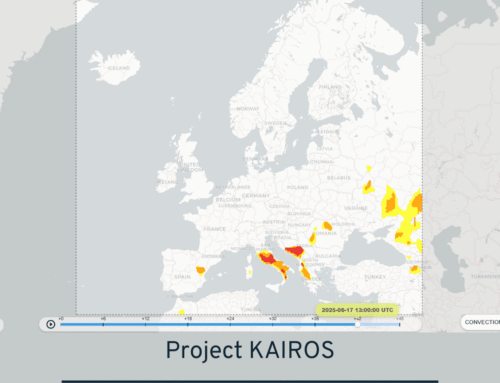BURDI: Advancing Drone Integration in European Airspace
As drones take on roles in delivery, emergency response, and a variety of inspection and surveillance tasks, integrating them safely into airspace is important and with a growing number of drones, it will also become a challenge for air traffic management. Traditional air traffic control isn’t designed for the increasing number of unmanned aerial systems, making new solutions essential.
U-space offers a structured approach by enabling automated, real-time coordination of drone operations through digital services. In this effort, projects like BURDI play a key role in turning U-space concepts into practical solutions for real-world deployment. The BURDI is the first implementation and certification of a national U-Space in Europe. In our previous blog post, you can find more details on the vision and goals. Now, this update post explores its ongoing developments and the contribution of Unisphere in more detail.
Launched in late 2022, BURDI is part of the Connecting Europe Facility 2021-2027 program, designed to enhance transportation networks through the integration of UAS operations. By supporting smart, sustainable, and secure mobility, the project is fostering new opportunities for both commercial and state drone applications across various operational environments.
Objectives
The BURDI project is centered on two main objectives to further U-space airspace implementation. First, it aims to establish a U-space airspace by conducting a market analysis to assess the demand for drone-powered solutions, particularly for BVLOS (Beyond Visual Line of Sight) flights. This process includes a thorough airspace risk assessment in collaboration with Civil Aviation Authorities and an evaluation of social acceptance and governance factors.
The second objective is to demonstrate a scalable U-space reference deployment in Belgium. This deployment will ensure interoperability with existing Air Traffic Management (ATM) systems while enabling the seamless scaling of multiple mature drone use cases. By addressing both technical and regulatory aspects, BURDI aims to set a foundation for safe and efficient drone integration into European airspace.
Use cases
Several specific use cases are outlined in the BURDI project, each with clear go-to-market plans. In medical logistics, it aims to enable regular daily transport of goods between hospitals and laboratories, as well as urgent, prioritized deliveries. For safety and security, the project anticipates changes in U-space airspace structure due to state operations, such as defense activities, and the use of UAS to support police operations. Infrastructure inspection applications include rail, power line and pipeline monitoring, as well as port infrastructure and environmental surveillance.
Partnership & Unisphere’s role
At the core of the BURDI project is collaboration with key stakeholders, including Belgian and Dutch civil aviation authorities, who provide ongoing support through their participation in the Advisory Board. The Belgian Air Navigation Service Provider (ANSP), skeyes, plays a crucial role in the seamless integration of UAS with manned aviation and has established a subsidiary, SkeyDrone, dedicated to Unmanned Traffic Management (UTM). SkeyDrone has been actively involved in various demonstrations and R&D activities alongside UTM stakeholders, such as drone operators, manufacturers, software providers, and UTM service providers.
While collaborating with the aforementioned partners, Unisphere has two main activities.
One is the development of weather-related services for U-Space drone operations. The Weather Information Service is one of two optional USS (U-Space services) and has been developed under the BURDI project in accordance with the 2021/664 regulation.
The service provides current weather data from (a) airport observations and (b) latest weather model data from authorized European aviation weather service providers for specific points of interest. This service is integrated into the UTM (unmanned traffic management) platform of Unifly and ensures, all U-Space Services described in the regulation are in place.
In addition, Unisphere has developed a prototype for an advanced weather service that could potentially enhance U-Space Services by providing weather not only at a single point of interest, but along the trajectory of the drone, at the respective flight level. This allows for more sophisticated flight planning by considering the entire flight to avoid unforeseen events along the way.
A second key outcome of Unisphere is its contribution to the evolution of the Regulation, using the lessons learned from the implementation of the current version. Unisphere has developed a concept for how the weather information service for U-Space should be improved to better meet the intended objectives. A key message is the need for a clear distinction between weather information for U-Space services and for drone operators. While other USS need weather data, there is no guidance on how this service should be provided, which is needed in future update of the U-Space regulation or the AMC/GM. The feedback will be shared with regulators and other stakeholders who are in the process of implementing U-Spaces or are involved in the rulemaking process. The ConOps will be shared with the broader public at the end of the project, once feedback from other stakeholders has been incorporated.
Expectations
With a focus on future deployment, BURDI is expected to produce key results that will support the broader adoption of U-space airspace across the EU. The project will cover not only technical and operational aspects but also legal, financial, and societal matters to ensure a sustainable, efficient, and safe deployment of U-space in both controlled and uncontrolled airspace, as well as in Urban Air Mobility (UAM) environments. Furthermore, BURDI will evaluate processes to ensure compliance with U-space requirements, recommending standards and alignment measures that could influence the development of enhanced regulations and directives by European authorities.





